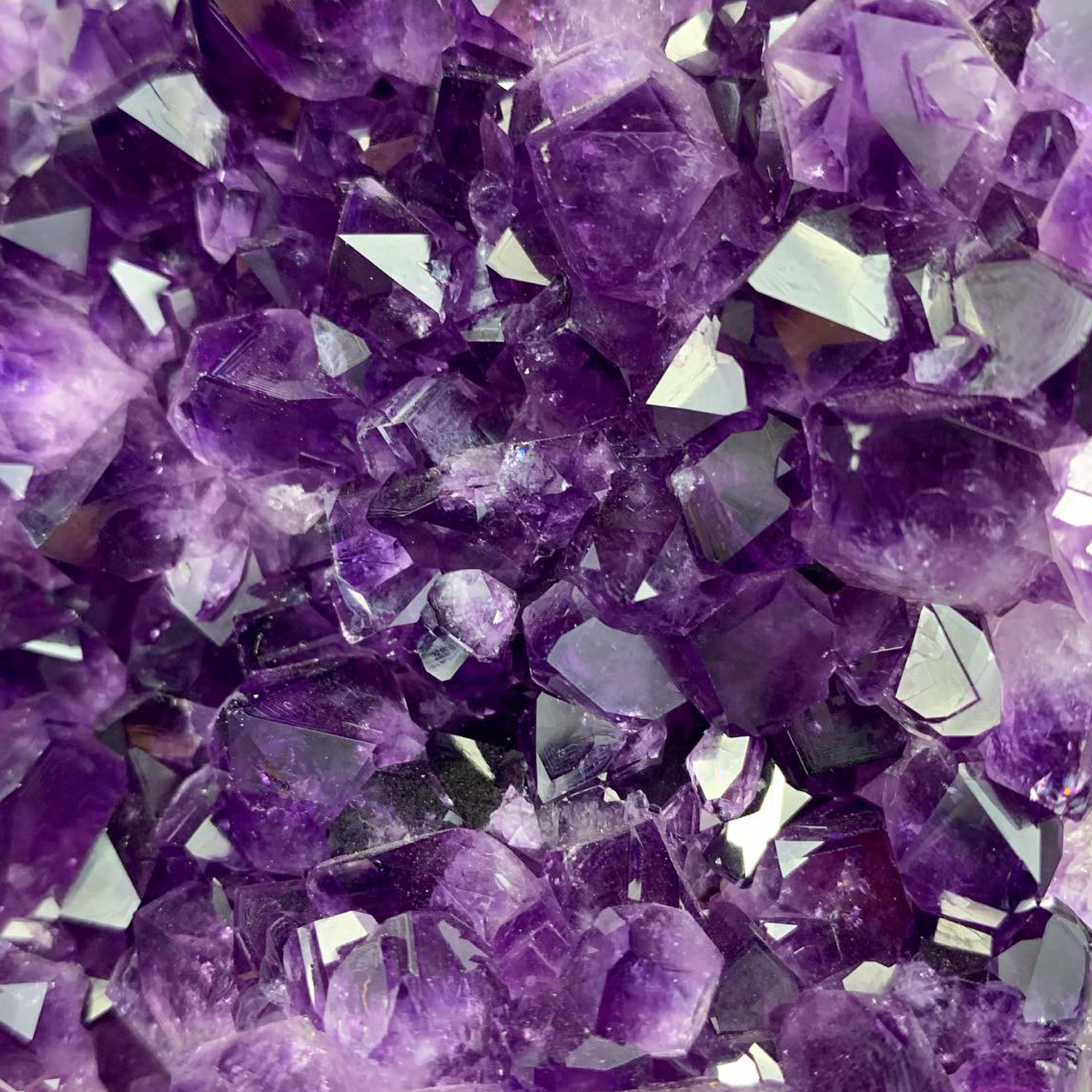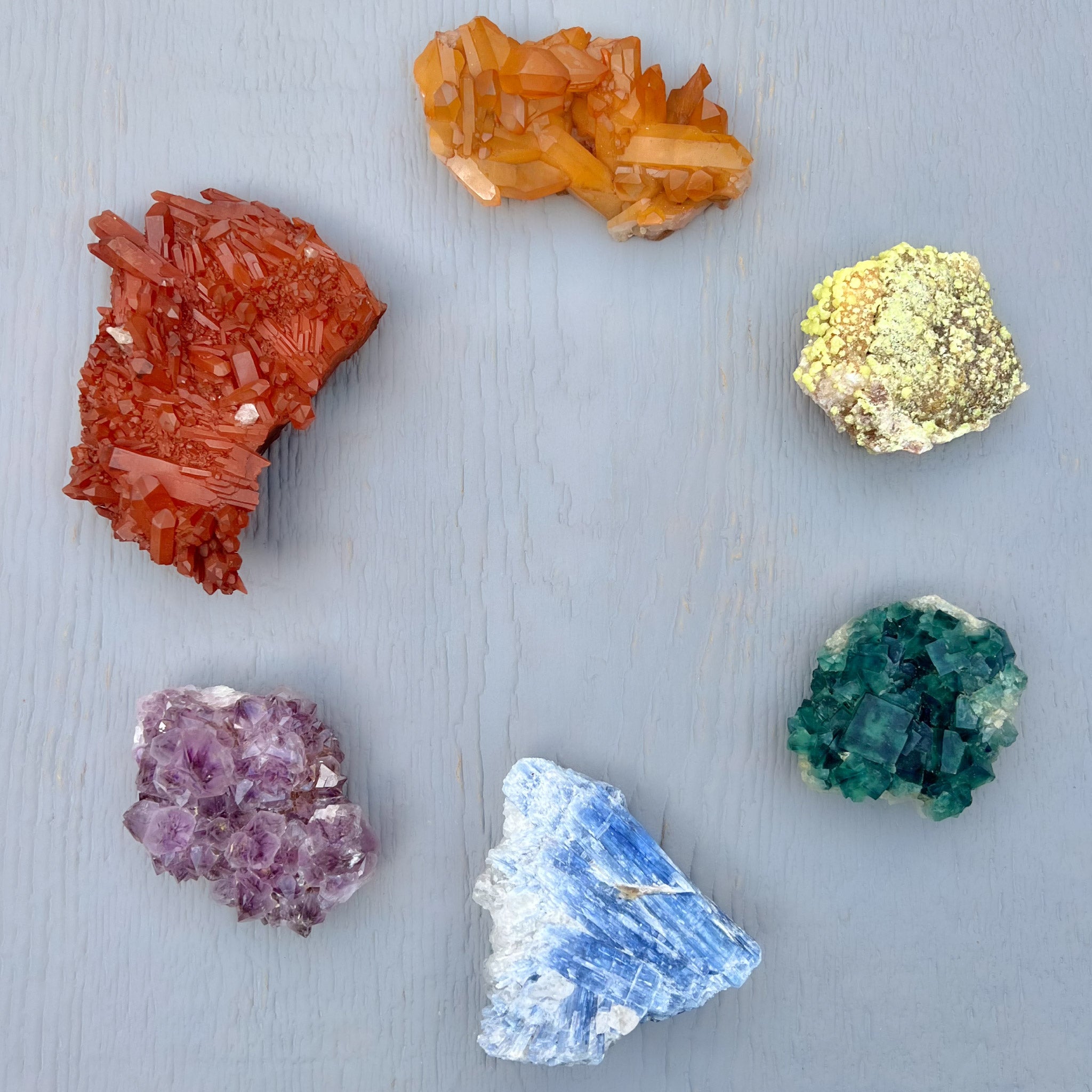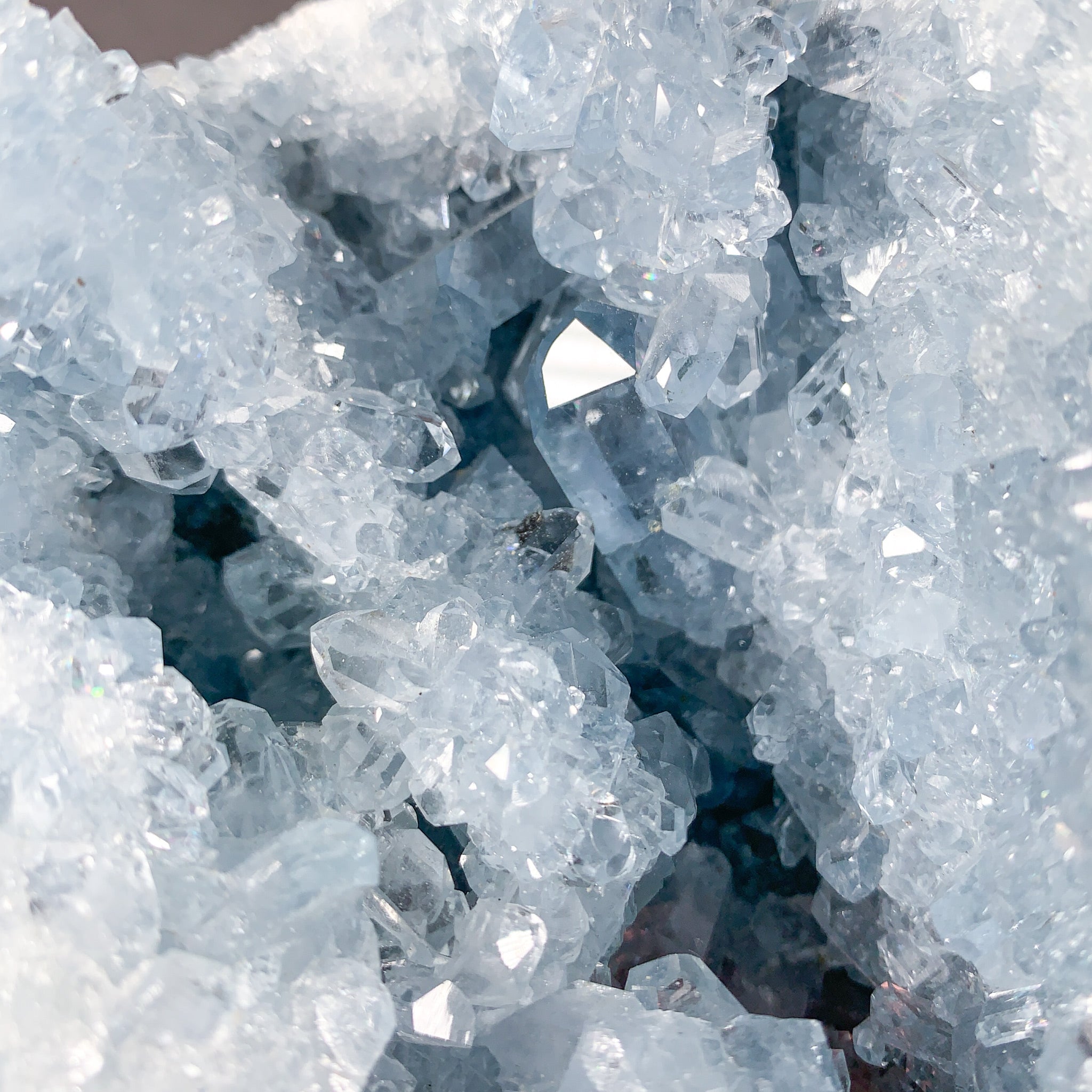This Guide will help teach you how to properly care for your new geologic goodies, including tips for handling and cleaning your specimens properly. We will also explore the best places to display your new treasures so that they keep looking beautiful for years to come!
Tips for Handling Your New Crystal or Fossil Specimen
Congratulations! You've purchased a brand new rock or fossil specimen, but now what? It may be an easy to handle specimen like a chunk of Rose Quartz, or it may be a fragile crystal of Selenite.
What is the best way to remove crystals or fossils from their packaging?
It is best to open your package over a sofa, bed or other soft surface in case you have a butterfingers moment! Some crystals and fossils are very delicate and should be treated as such. Be careful to slowly remove the packaging material so crystals do not get stuck or broken in the unwrapping process.
Try and avoid touching or poking at delicate crystals directly, as this could loosen them from the rock matrix and cause them to fall off the specimen. When picking up a crystal or fossil, always attempt to gently pick it up from the sides of the specimen, then place it in the palm of your hand and cradle to examine.
Knowing Your Rock / Fossil
Being familiar with your new specimen will be very important when determining the best display location, methods for cleaning, and also how to handle it around other pieces in your collection.
Does your rock have special needs? Is it water soluble? If so, you would never want to clean it using water. Does it have color or light sensitivity? Is it ok to be physically touching another piece in your collection or will it scratch or be scratched by something else? When in doubt, just ask! Drop us a line and we'd be happy to give you some tips specific to your new piece.
Display Location
Finding the right display location for your crystals and fossils is key to both enjoying your geologic goodies AND keeping them safe and looking beautiful for years to come. So what do you need to consider when picking the perfect display location?
Light Exposure
Nearly all crystals naturally formed in dark environments deep inside the earth. Long exposure to sunlight can cause your crystals to fade in color. Just as too much sun can negatively affect certain plants, fade your clothing or eventually damage paint color on a car, it can also effect your crystals. Be careful that you don't place your crystals or fossils in a place that gets direct sun. Keep your beauties looking spectacular by keeping them out of direct sunlight.
Moisture
For most mineral and fossil specimens, it is best to reduce the amount of moisture they are exposed to. Unless you have a relatively hardy crystal such as Quartz, I would not recommend displaying your stones in a moist environment such as a bathroom or pool / hot tub area. This will help prevent any unwanted interactions with water. Some minerals are water soluble, some will tarnish over time. So it is best to keep your specimens in a dry location, away from direct sunlight and water exposure.
Spacing
Some people like to keep their crystals and fossils in one tightly concentrated area. While this is fine for some specimens, always keep in mind what hardness your minerals are. Minerals have varying hardness levels based upon the Moh's hardness scale. Some will scratch others. Some can be scratched by others of higher hardness. If storing crystals together in a dish, bowl, or tightly packed on a shelf, be sure they won't scratch or damage one another.
Display Case vs. Shelf / Night Stand
Display cases are great to keep your pieces safe and secure and also reduce dust build up and also reduce exposure to excess humidity. If you do not have a display case, that's ok too! Plenty of people (including myself) have rocks and fossils sprinkled all around the house. Almost every shelf and our night stands have crystals or fossils on them.
Just make sure to keep them out of reach of curious hands or paws you may not want touching them. Keeping your rocks safe from kids, pets and even from accidentally bumping into them yourself will help keep them safe and sound.
Cleaning
We have an extensive blog post including 7 Steps for Cleaning Your Crystal and Fossil Collection here. After reading this post, if you are still unsure on what the best cleaning method is for a particular rock or fossil, feel free to reach out to us at info@unearthedstore.com!
How Do I Care for My Stone Jewelry?
It is best to always remove your jewelry before showering / swimming. Never wear your jewelry in a hot tub or hot springs as it will tarnish or even damage the stone. Make sure to remove your jewelry and store it in a safe place. Removing jewelry over a soft rug or bed is a good idea in case you accidentally drop it.
If you notice the sterling silver surrounding your stone is beginning to tarnish from normal wear, try polishing the metal with a pre-treated silver polishing cloth. Avoid getting the polish on the stone and stick to just the metal areas. This should keep your jewelry looking just as fabulous as you do!




